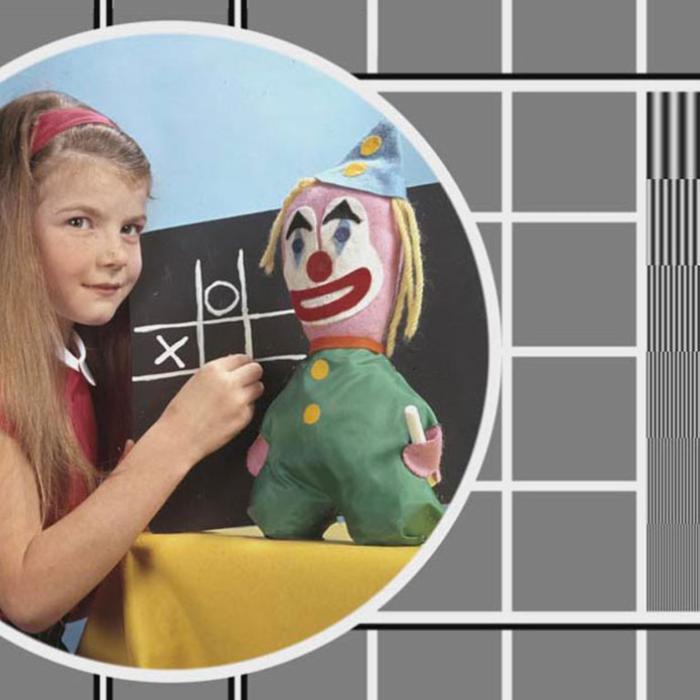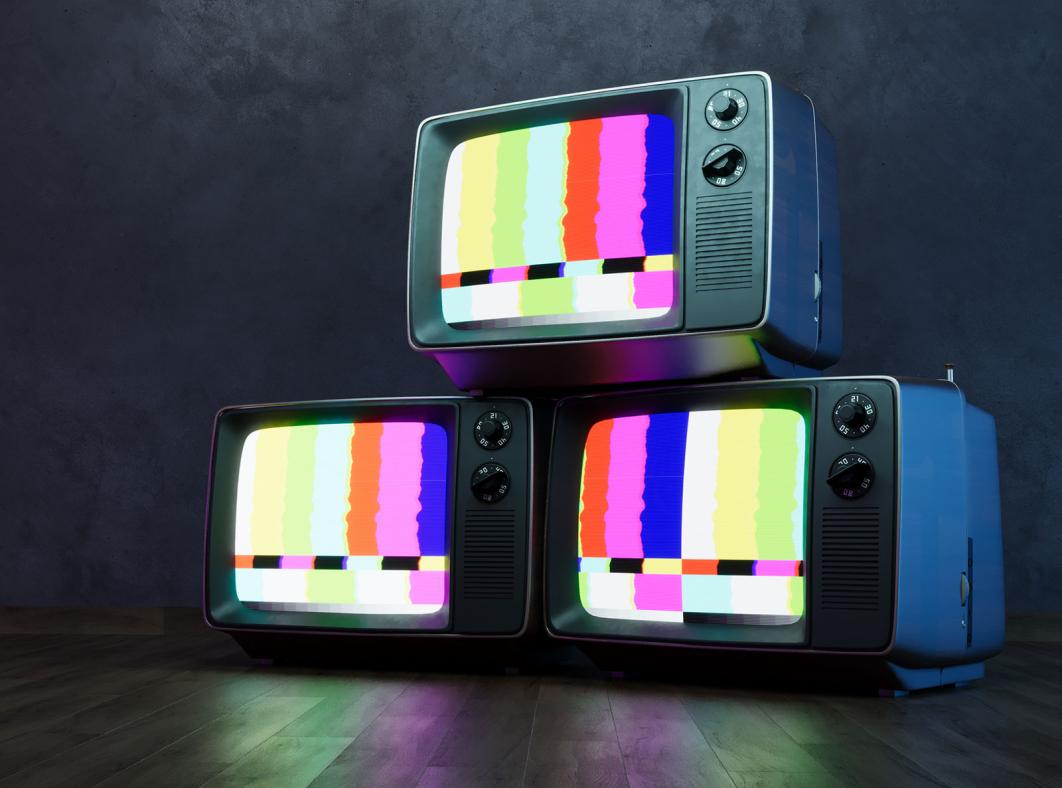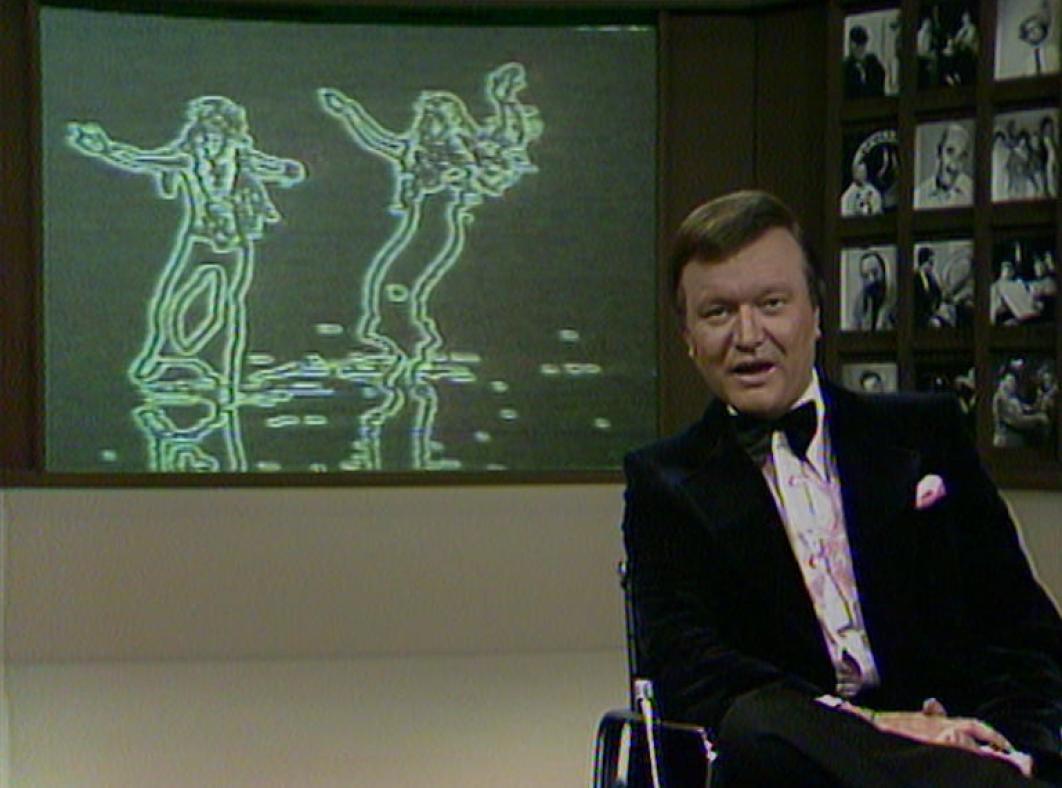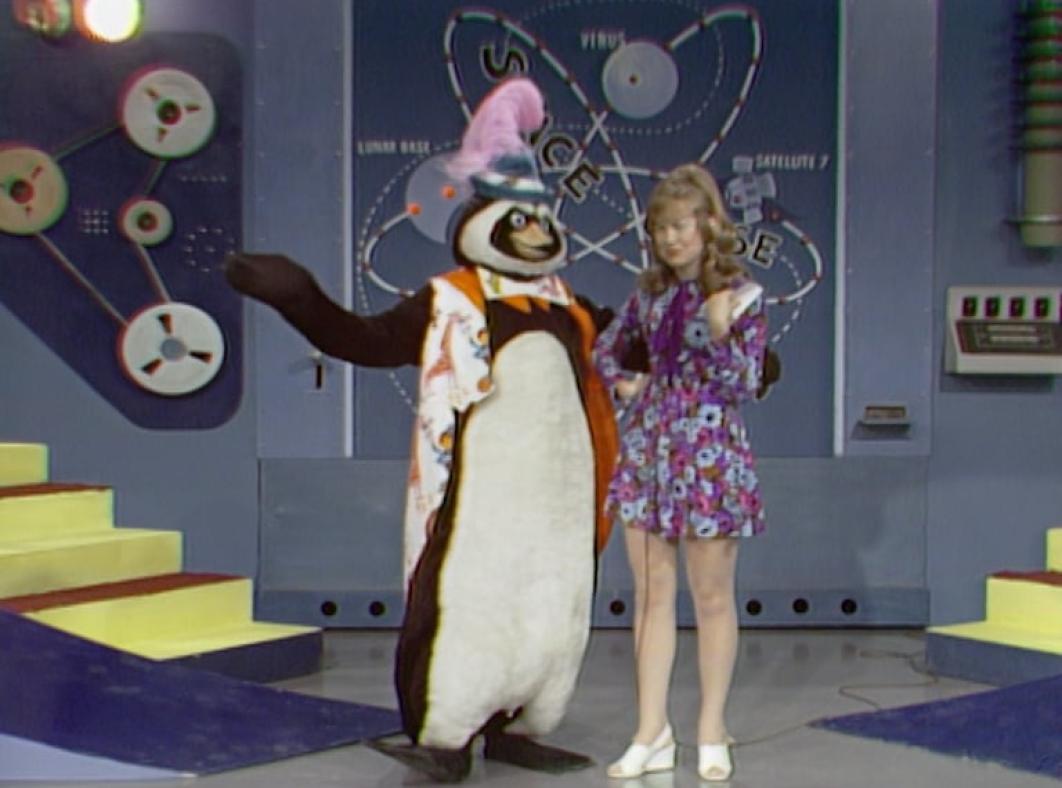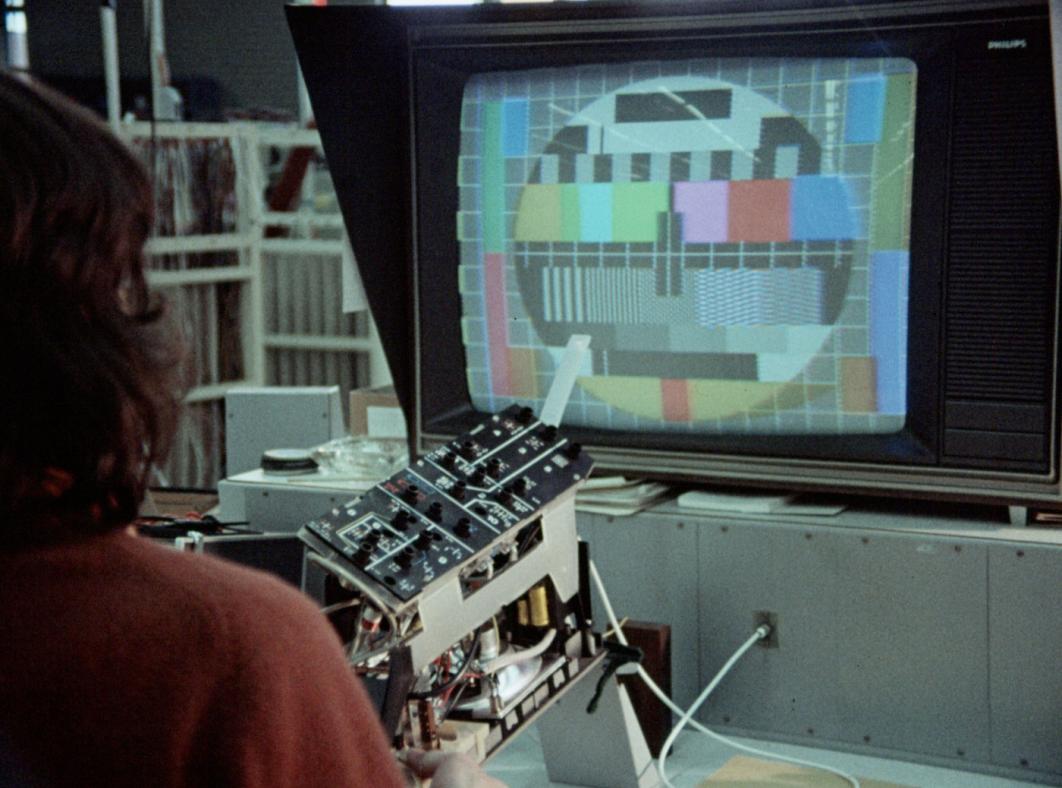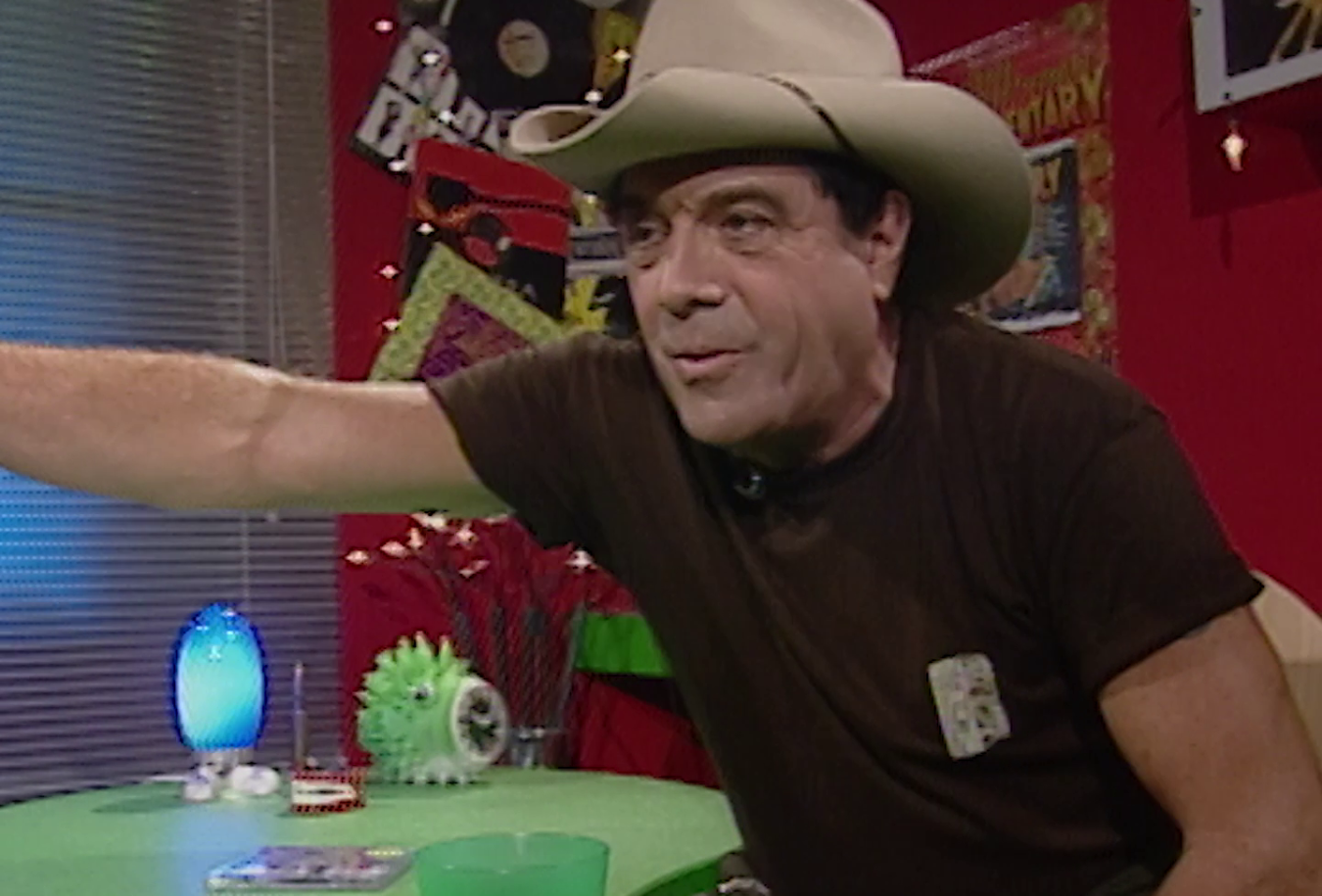
Bye bye, grey days
Australians had been hearing it for years – colour TV was coming. But as C-Day closed in, the hype turned electric. Networks fine-tuned their broadcasts, magazines cranked up the buzz and households faced the big question: stick with black-and-white or dive into the dazzling unknown?
The night TV lit up
For one surreal week in February 1975, colour TV was both here and not here. Test broadcasts had been running for months, but the Australian Broadcasting Control Board ordered a full blackout of colour programming after 6 pm in the lead-up to C-Day. The idea? Maximum impact. The first moments of colour had to land with a bang – and when 1 March arrived, they did.
TV stations treated the switch like a grand performance. Some counted down to midnight, others launched with glossy promos and over-the-top fanfare. Families crowded around their brand-new sets, while those without peered into shop windows, eager to see the world beyond black-and-white. The colours weren’t subtle – blues blazed, reds popped and skin tones took on a whole new life (sometimes a little too much). In this clip from 7 Perth: The First 50 Years (2009), Channel 7 captures the moment the screen changed forever.
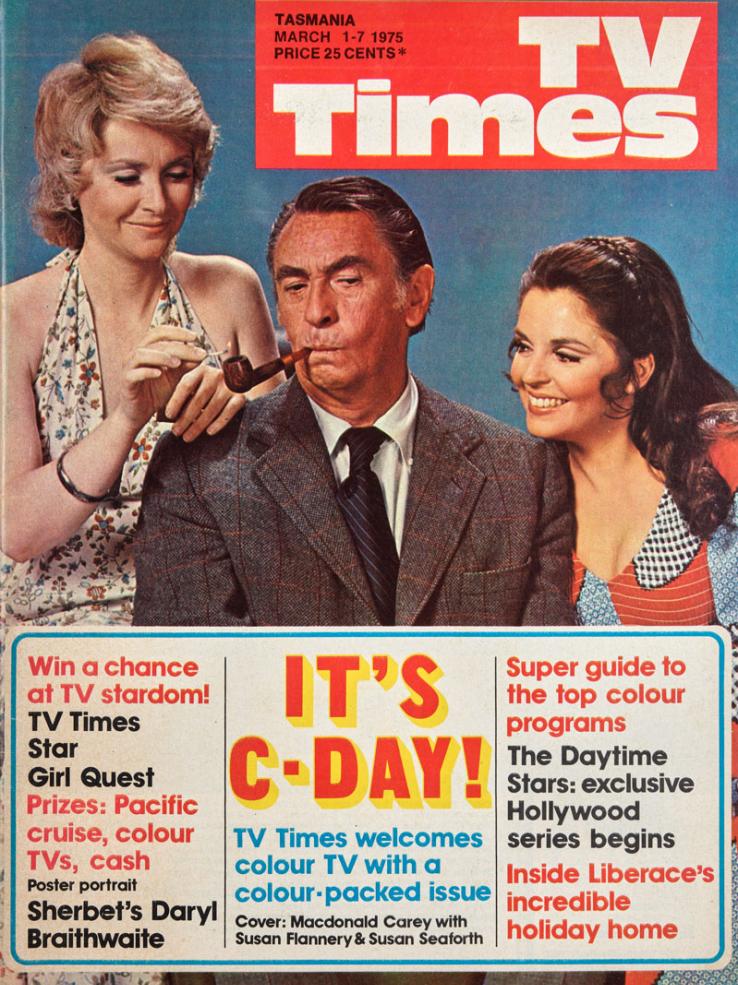
Bold headlines for a bold new era
TV Times wasted no time celebrating the colour revolution. The 1–7 March 1975 edition shouted the news in bold, red-and-yellow block letters, paired with a cover image of Days of Our Lives stars basking in all their newly vibrant glory. TV had never looked so sharp – and neither had the hype. For households still clinging to black-and-white, the message was clear: the future had arrived.
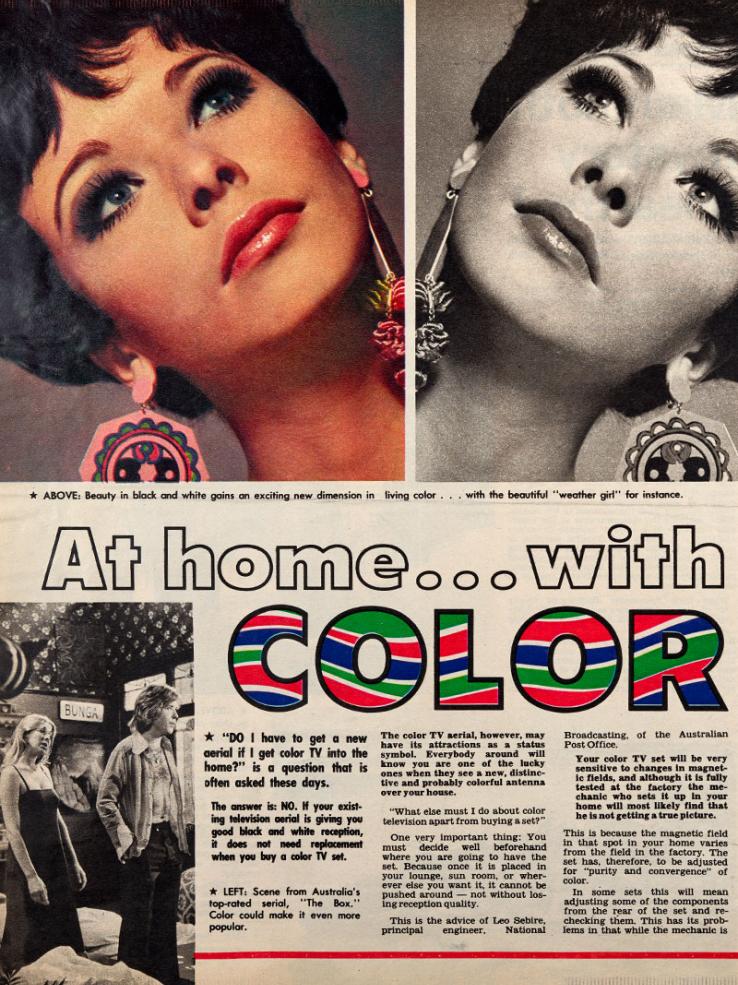
Ready for the rainbow?
While TV Times played up the spectacle, The Australasian Post took a more practical approach. Its 1 August 1974 edition prepped audiences for what to expect – and how to adjust. Lighting, furniture placement, even the way you watched had to change. Some viewers swore they needed to dim the lights to handle the brightness. Others weren’t so sure about the new look at all. One thing was certain: there was no going back.
BY ROSE MULREADY
The coming of colour meant more than a simple pulling of a switch to transform Kansas into Oz. Colour TV required extra lights, changes to costumes and sets, make-up tweaks and ‘colour checks’ before filming. Even with years to prepare, the new technologies upended the industry.
Testing, testing… is this thing on?
Colour TV didn’t just arrive – it had to be tested, tweaked and, in some cases, fought off with comedic force. While broadcasters fine-tuned their signals with hypnotic test patterns, The Aunty Jack Colour Day Special took a more dramatic approach, treating the new era like an existential threat.
Colour test pattern, STW9 Perth, 2 November 1974. Courtesy: Nine Network. NFSA title: 411868
The first flickers of colour
The transition to colour wasn’t an overnight switch – it took months of testing to get the signal right. To help both broadcasters and viewers adjust, the Australian Broadcasting Control Board (ABCB) allowed stations to transmit colour test patterns from 7 October 1974. These daily transmissions ran for one hour in 15-minute bursts, offering a first glimpse of the new spectrum.
This particular test pattern from STW9 Perth might look simple, but it played a crucial role in fine-tuning settings before the big day. For anyone watching at home, it was a tantalising promise: soon, TV would never look the same again.
Aunty Jack Colour Day Special, 1975. Published with the cooperation of Grahame Bond and Rory O’Donoghue. Copyright ABC. NFSA title: 569666
Aunty Jack vs the colour monster
At midnight on 1 March 1975, Aunty Jack went to battle – and the enemy was colour television. While most shows embraced the new technology, The Aunty Jack Colour Day Special leaned into panic. Aunty Jack, Thin Arthur and Kid Eager treated colour like an invading force, resisting its arrival with grim determination (and a solemn rendition of 'Wollongong the Brave').
Colour crept in anyway, transforming the screen before their eyes. As Aunty Jack finally gave in, the grey tones of black-and-white seemed lifeless by comparison. The stunt was part satire, part spectacle – and a perfect send-off for Australia’s old TV landscape.
Turn up the saturation
Mid-'70s TV cranked everything to eleven. Neon stage lighting, eye-popping outfits and deeply saturated sets made sure no one missed the shift. For Australian audiences, it was a wild new way to watch – louder, brighter and impossible to ignore.
Excerpt from Hey Hey It's Saturday, circa March 1975. Courtesy Somers Enterprises Australia Pty Ltd. NFSA title: 1526924
Saturday morning got louder
Few shows embraced the chaos of mid-'70s TV like Hey Hey It’s Saturday, and adding a full spectrum of saturation only made it more unhinged. This clip from the NFSA collection features what is believed to be the earliest surviving colour footage of the show, recorded in the opening weeks of C-Day in March 1975.
Melbourne band Stylus perform ‘Summer Breeze’ in peak '70s fashion, and the footage captures the show’s signature mix of live music, over-the-top sets and plenty of visual spectacle. If Hey Hey had been colourful in spirit before, now it had the visuals to match.
Chequerboard chaos and neon nightmares
Skyhooks never did things halfway, and neither did mid-'70s TV.
This 1976 performance of 'Horror Movie' is all high-voltage theatrics – a chequerboard stage, eerie neon lighting and costumes that demand attention. The mix of bold visuals and split-screen effects turns the whole thing into a fever dream of glam rock and TV spectacle.
If early colour television had any limits, Skyhooks made sure they weren’t visible here.
A sunshine kind of day
With colour TV just around the corner, Eric Porter's animation studio began production on the children’s series Yellow House, which jumped with both feet into the bright possibilities of the new medium. The show was a mix of cartoon animation, puppet shows and live action, and featured a children's band, the Koalas. In the opening sequence, the set is a psychedelic explosion in shades of daffodil, with the Koalas and their clown pal getting up to all kinds of circus antics, and bright explosions of balloons, streamers and confetti.
Now kids could watch cartoons with kaleidescope eyes.
Helen Reddy performs 'I Am Woman' on The Helen Reddy Special, broadcast 19 October 1975. Courtesy: Seven Network. NFSA: 1530818
A powerhouse in green sequins
Helen Reddy didn’t need pyrotechnics to command attention. Draped in shimmering green sequins against a glowing backdrop, she delivered her hit single, 'I Am Woman', with quiet confidence.
Filmed for The Helen Reddy Special in 1975, the performance is a study in strength and style. The deep, rich tones of the set make every frame feel iconic, capturing a defining moment in Australian music history with striking clarity.
Selling the future
Colour TV was here, and manufacturers wasted no time convincing Australians to make the switch. From glossy ads to magazine competitions, every trick in the marketing playbook was deployed to sell the thrill of full-spectrum viewing. For those still holding onto black-and-white, the message was clear: upgrade or miss out.
A whole new world (of colour)
Philips promised more than a sharper picture. Their ad campaign claimed colour TV would transform the entire viewing experience. ‘Colour that makes you feel like you’re really there,’ the tagline declared.
The pitch wasn’t subtle. ‘We want you to have the best,’ the ad urged, playing on the fear of being left behind. By 1977, most Australian households had made the switch, but holdouts still needed convincing.
For those watching in black-and-white, the message was clear. Colour wasn’t the future — it was the present.
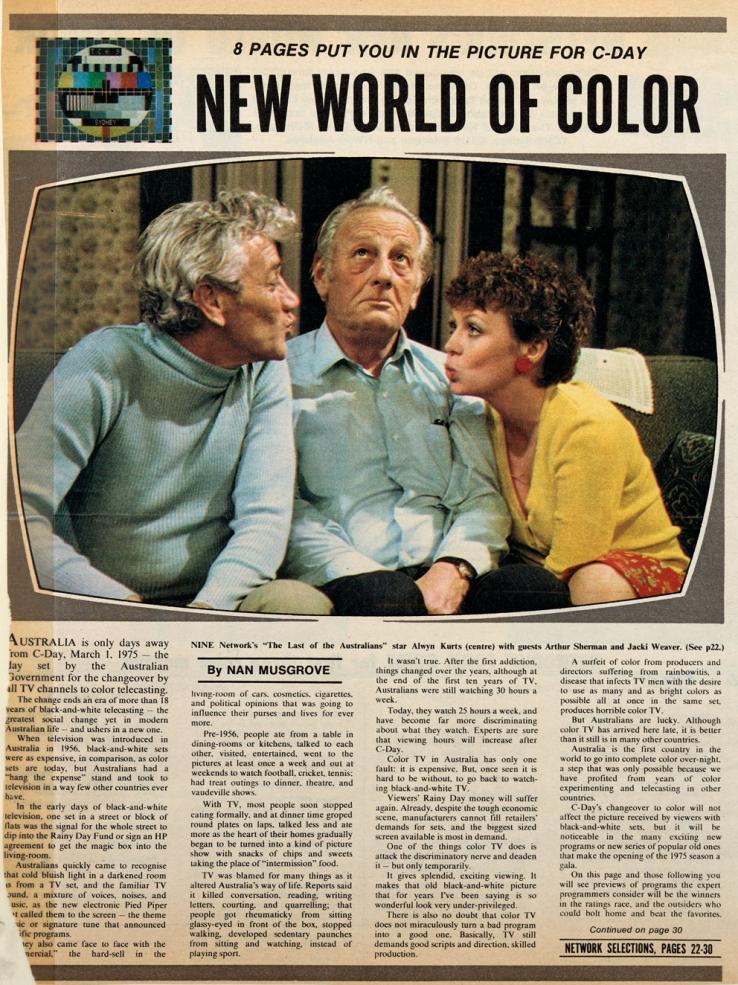
Colour TV: seen in print
Newspapers helped Aussies adjust to the colour era. Articles explained the technology and reassured hesitant buyers. This clipping shows a still from comedy series The Last of the Australians, created by Crawford Productions to kick off the 1975 season, with Jacki Weaver a standout guest star in bright yellow and red. Print media kept the message front and centre: black-and-white was fading fast, and colour was the way forward.

A clown, a TV and a sales pitch
A colour TV was meant to make everything look better – even a sad clown. In this TV Week ad from 1975, two mesmerised children watched a PYE television while a forlorn clown stared out from the screen. The image was strange, but effective. It exaggerated the gap between black-and-white and full colour, making the decision to upgrade feel inevitable.
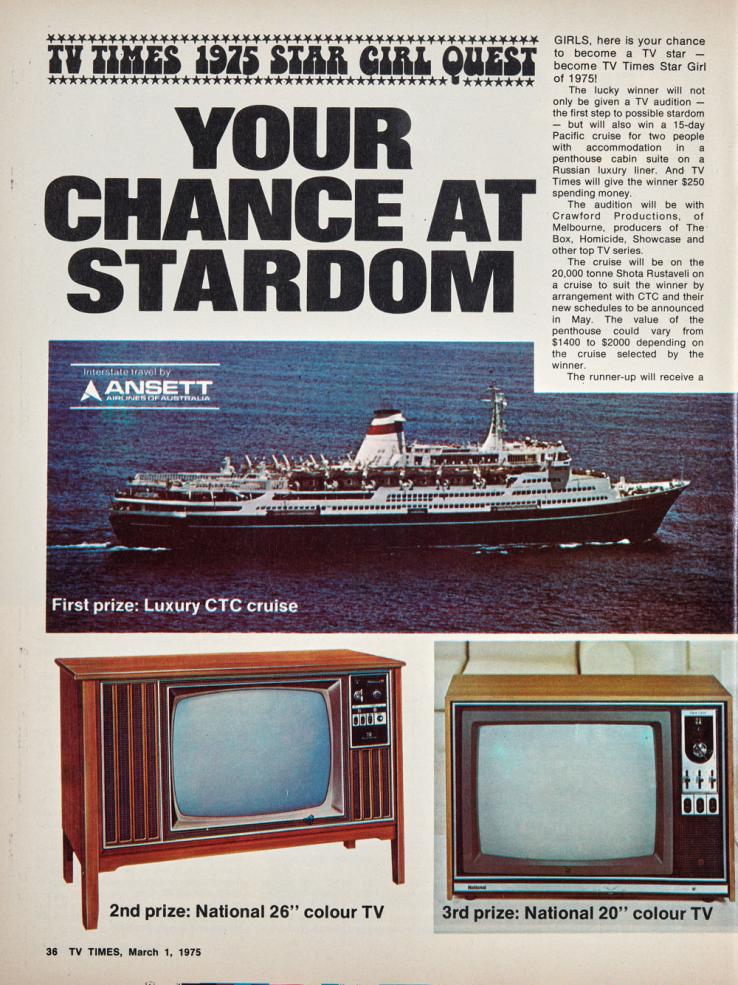
Win big, watch bigger
In 1975, TV Times launched the Star Girl competition, offering readers the chance to win a cruise or a brand-new colour television. The prize was exciting, but the competition was also a marketing strategy. The more people dreamed of winning a set, the more likely they were to buy one. If colour TV wasn’t in your lounge room yet, maybe luck would bring it home instead.
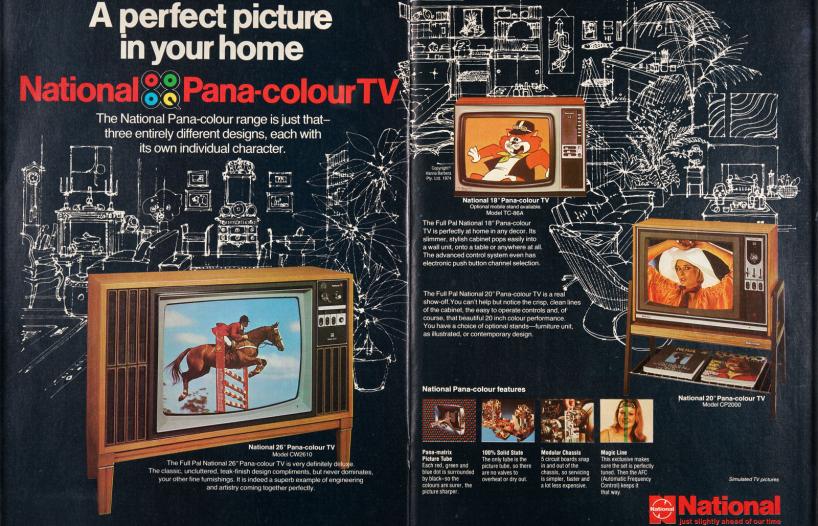
From black-and-white to bright
National Pana-colour wanted black-and-white to look outdated. Their two-page magazine spread featured sleek colour TVs against a backdrop of black-and-white sketches. The contrast wasn’t subtle.
By 1975, colour TV was a marker of progress. Advertisers knew some buyers were still hesitant, so they reinforced the idea that holding onto black-and-white meant falling behind.
The ad framed the decision as a choice between the past and the present. The world had already moved on. Your lounge room needed to catch up.
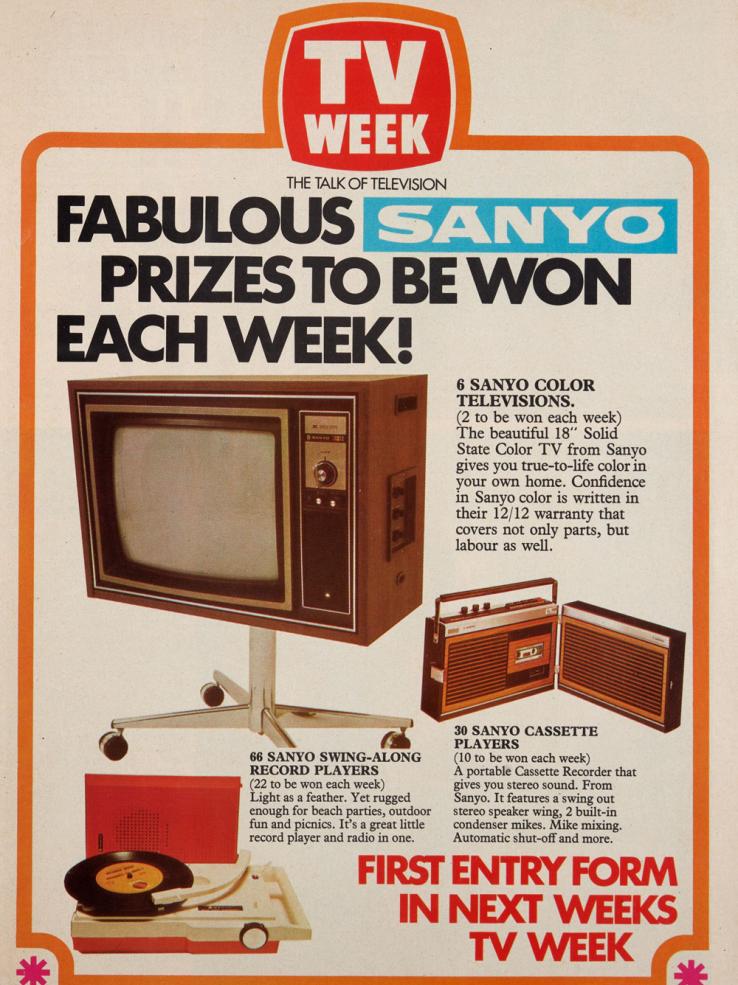
Sanyo sweetens the deal
In 1975, TV Week and Sanyo made colour TV the ultimate prize. Their competition gave readers the chance to win a brand-new set, tapping into the hype around Australia’s TV revolution. Contests like these created demand. If buyers weren’t ready to invest, they could at least imagine winning – and once they saw colour in action, there was no going back.
Do you dream in colour?
I was about 8 or 9. We were the first house in the street to have colour TV. People would come over to our house to watch ads so when they went home, they could remember the colours.Michele, Sydney NSW
I can't believe it's been only 50 years. I feel like it should be longer. I do remember not being interested in watching anything that wasn’t colour. Scary movies were scarier when red blood dripped down the screen instead of greyish ooze.Karen, Shellharbour NSW
We only had a black-and-white TV. But when I first saw a colour television, I was walking along the main street of Goulburn, looking in the window of an appliance store. Stopped me dead in my tracks upon seeing colour for the first time. Wow, the colour – even through the big pane glass window.Brendan, Goulburn NSW
I think it made Aussies realise and appreciate how beautiful our country was with shows like 'The Leyland Brothers', 'Jack Absalom's Outback' and 'Alby Mangels’ Adventure World'.Jenny, Brisbane QLD
I remember watching 'The Six Million Dollar Man' during a late-shift tea break at work on black-and-white. That night, I was discussing a plot twist with my girlfriend. She pointed out that the guy in the blue shirt was the villain, a colour cue I’d missed.John, Ipswich QLD
'You do look rather funny in colour, I must say.'Sir Eric Pearce to 'The King of Colour', Graham Kennedy
Before C-Day was even on the horizon, Australian TV’s biggest stars were already experimenting with colour – some more successfully than others. At the 1968 Royal Melbourne Show, GTV 9 (Nine Network) introduced The King himself, Graham Kennedy, as the ‘King of Colour.’ In true Kennedy fashion, he took the job literally, slapping three bold stripes of paint onto a white wall – completely missing the mark on how colour television actually worked. It was messy, ridiculous and a fitting preview of the future of Australian television.
'Nice to be with you in colour, this is the first time that I've not been in black-and-white.'Bert Newton
Six years before C-Day, GTV 9 Melbourne (Nine Network) gave lucky audiences a sneak peek at the future. In a special test film screened at the 1968 Royal Melbourne Show, some of Australia’s biggest TV personalities – including Bert Newton, Hal Todd, and Mike Walsh – stepped into colour for the very first time. The transition may have been gradual for viewers at home, but for those on screen, it was immediate. Newton summed it up best: for the first time, he wasn’t in black-and-white.
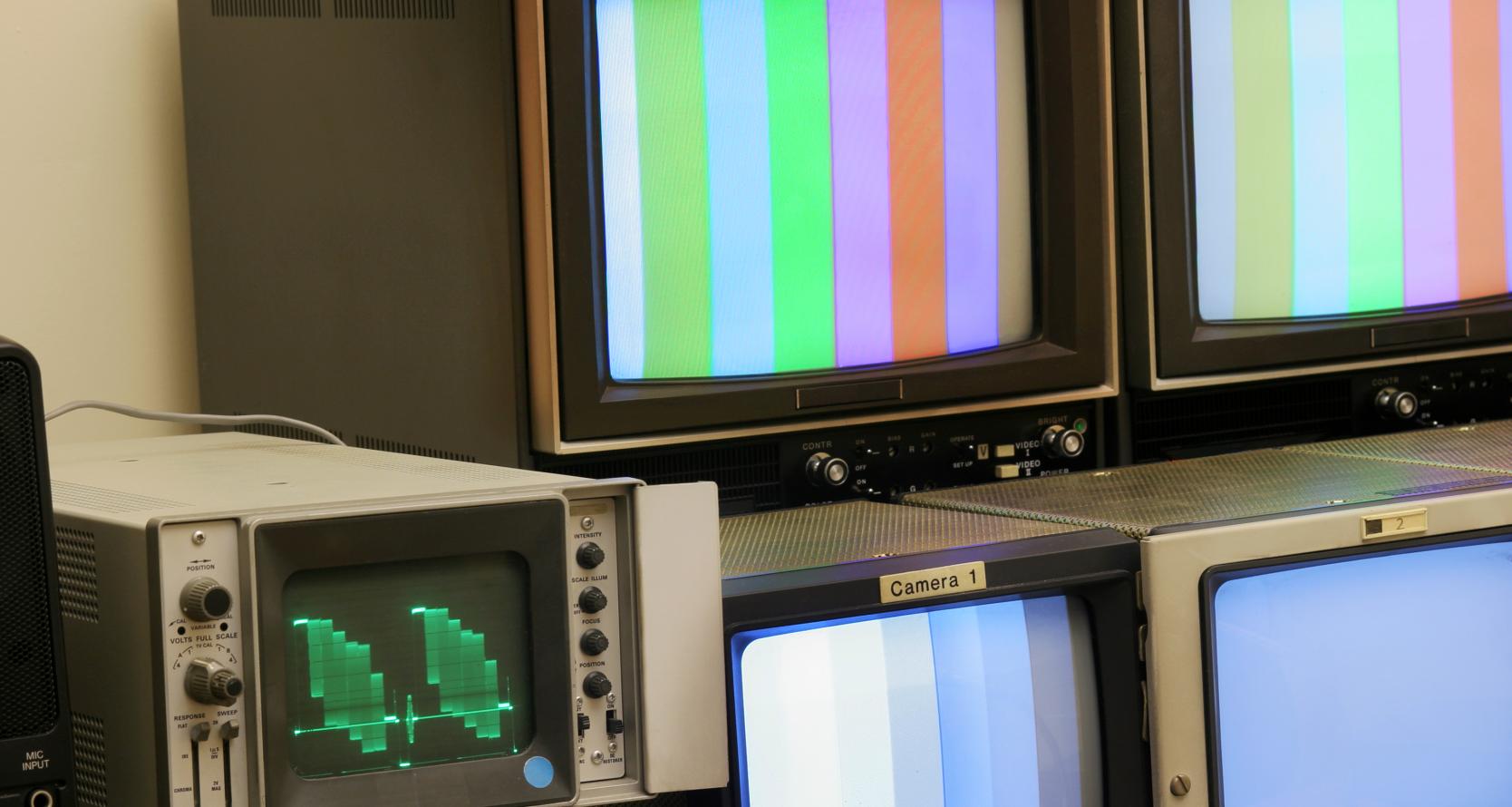
Big business, big scams
Colour TV meant brighter screens and a booming industry. Factories raced to meet demand, politicians seized the moment and eager buyers lined up for the latest technology. But where there’s hype, there’s always a hustle. As new sets rolled out, scammers showed up, offering impossible ‘black-and-white-to-colour’ upgrades.
Whitlam bangs the gong
In 1974, Gough Whitlam cut the ribbon on a new Rank NEC factory in Penrith, cementing Australia’s place in the colour TV boom. The plant would produce thousands of sets for eager households, fuelling jobs and local manufacturing.
As Whitlam toured the facility, shaking hands with Japanese executives and inspecting the production line, the event ended with a theatrical flourish – a bodybuilder stepping forward to strike a massive gong, the unmistakable trademark of the Rank Organisation. With that, Australia’s colour TV rollout was making noise.
Beware the TV tricksters
The arrival of colour TV brought excitement – and con artists. In the lead-up to C-Day, dodgy salespeople knocked on doors, promising to ‘convert’ black-and-white TVs into colour for a fee.
ATN 7 Sydney aired a warning in August 1974, featuring an expert who shut down the scam: no magic fix, no secret switch, and no need for a new aerial. If you wanted colour TV, you had to buy the real thing. Some fell for the pitch, but most quickly learned the truth – if a deal sounded too good to be true, it probably was.
More collection highlights
Read NFSA curator Bronwyn Barnett's two-part history of Colour TV in Australia and view more highlights in the links below.
Olympics in colour
In 1956, television was introduced to Australia in time for the Olympic Games in Melbourne. In 1976, the Olympic Games in Montreal contributed to the high uptake of colour, as is highlighted in this clip from 20 Years of Television (1976).
Channel Seven's colour television demonstration with Percy the Penguin
Stations used the colour broadcast tests to tantalise viewers with some of the programming they would be able to watch once colour television commenced, as can be seen in this clip from Channel 7 Perth.
Credits and acknowledgments
Curatorial: Tara Marynowsky, Bronwyn Barnett, Siobhan Dee, Simon Smith
Multimedia producer: Rachael Priddel
Feature article: Rose Mulready
Editorial: Kate Scott
Licensing and Rights: Anna Yates
Digital producer: Mel Bondfield
With thanks to:
Nine Network
Cinesound Movietone Productions
Seven Network
The National Film and Sound Archive of Australia acknowledges Australia’s Aboriginal and Torres Strait Islander peoples as the Traditional Custodians of the land on which we work and live and gives respect to their Elders both past and present.
